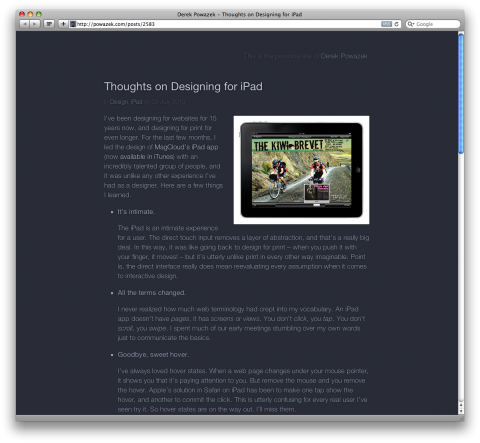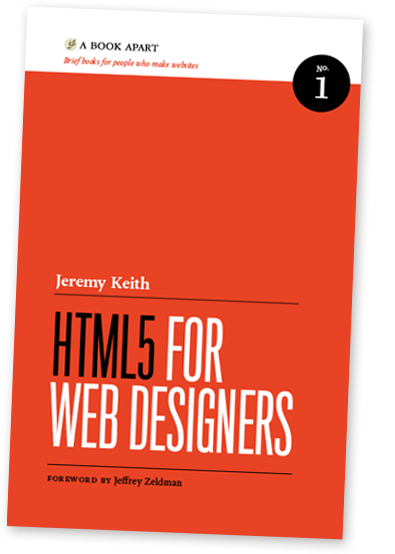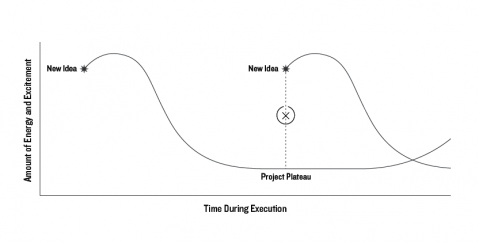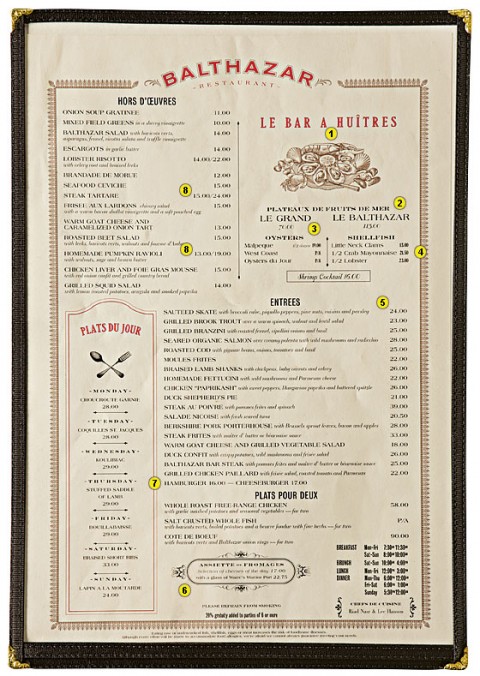
Here’s a fantastic post by Derek Powazek about designing for the iPad.
I am convinced that the iPad is changing how we design for the web in general.
I can’t wait to get started on the TeuxDeux iPad app in the coming weeks.

Here’s a fantastic post by Derek Powazek about designing for the iPad.
I am convinced that the iPad is changing how we design for the web in general.
I can’t wait to get started on the TeuxDeux iPad app in the coming weeks.
AIGA Metro-North’s reSPECt is a civilized dialog between advocates and opponents of speculative branding and design work.
Is speculative (spec) work productive and fair? Can it enable clients to achieve goals that are not possible with traditional work-for hire practices? Does it advance the fortunes of some at the expense of others? What are the rewards and perils of speculative work?
Once a rare practice, spec, or “try before you buy”, work is being requested a growing number of businesses-startups to global organizations. Many believe that the call for unpaid work is being fueled by changing mores, new forms of crowd-sourcing, and economic stress–but whatever the cause, spec work has the potential to upend the economic model of the industry.
Moderated by New York State Supreme Court Justice Colleen D. Duffy, our diverse panel explored if, why, and how spec work has a rightful place in the way projects are structured. The evening’s goal was to outline a way forward that meets the functional, economic, and ethical needs of clients and practitioners.
The panel included:
• Ric Grefé, Executive Director, AIGA
• Brendán Murphy, Senior Partner, Lippincott
• Jerry Kathman, President & CEO, LPK
• John Gleason, Founder & President, A Better View
Held June 24th, 2010 at the The Ossining Public Library’s Camille Budarz Theater.
reSPECt (an AIGA Metro-North Event) from Scott Lerman on Vimeo.

A List Apart just launched HTML5 for Web Designers. The HTML5 spec is 900 pages and hard to read. HTML5 for Web Designers is 85 pages and fun to read. Easy choice!
HTML5 is the longest HTML specification ever written. It is also the most powerful, and in some ways, the most confusing. What do accessible, content-focused standards-based web designers and front-end developers need to know? And how can we harness the power of HTML5 in today’s browsers? Jeremy Keith cuts to the chase, with crisp, clear, practical examples, and his patented twinkle and charm.
When is the iPad version going to become available, Jeffrey, Jason?
Designing for iPad: Reality Check, interesting Article over on iA
I asked Scott Belsky, who’s work and efforts I admire, to write a post for swissmiss. I was thrilled that he agreed. So here it is, the very first Guest Post on swissmiss:
In his article below, Scott will give you a personal introduction to some of the concepts in his new book, Making Ideas Happen, which comes out April 15th. The book breaks down the best practices on creative execution and pushing ideas forward. It’s simple, pragmatic, and an essential for any creative’s bookshelf.
If you’re not familiar with Scott, he’s the guy behind the Behance Creative Network and The 99%. (The 99% Conference last year, has been hands-down the most inspiring one-day conference I have ever attended. I am thrilled to be part of this years 99% this coming thursday).
Finishing Creative Projects & Other Lessons From Making Ideas Happen, by Scott Belsky
About 5 years ago, I set out to write a book about how the most productive people and teams in the creative world execute their ideas, time and time again. Along the way, our team at Behance grew to 15 people with a passion for organizing creative people, teams, and networks. The process of writing a book about MAKING IDEAS HAPPEN alongside building Behance as a company has caused a great deal of introspective moments.
It also yielded a number of realizations that have transformed the way we work as individuals, and as a team. Here are three of the biggest:
We’ve entered an era of reactionary workflow.
Without realizing it, most of us live a life of “reactionary workflow.” Endless emails, texts, tweets, messages on social networks, phone calls, instant messages… the list goes on. Rather than be proactive with our energy, we have become reactive – living at the mercy of the most recent incoming messages and requests. We’ve become overwhelmed by an endless stream of minute actions that don’t get us any closer to making an impact in what matters most to us.
The outcome? Bold, long-term ideas suffer as we lose our ability to prioritize. Luckily, some creative leaders have found ways to combat reactionary workflow. Whether through creating “windows of non-stimulation,” unique approaches to allocating energy, or rethinking the way you manage communications, you can develop tactics to accomplish major feats by being proactive with your energy.
Great ideas die in isolation.
Whether on our own or with a team, we rarely give new ideas a proper chance to gain traction. It turns out that the myth of the lone creative genius is just that: a myth. The constituents of your idea – those who make up your community – play a critical role in making ideas happen.
The first set of communal forces are of the “pull” variety, resources that you must PULL from those around you to boost accountability and help refine ideas. The second set is all about the PUSH, notably what and how you project your ideas to adequately engage others. The bottom line: The destiny of your ideas depends on how well you engage the energy and enthusiasm of those around you.

Creative process is really just about surviving the project plateau.
Everyone has their own approach to idea generation. There’s no “best way” to be creative. But when it comes to the process of executing an idea, there’s a common challenge that we all face: sticking with it. Most ideas are abandoned on what I’ve come to call the “project plateau” – the point at which creative excitement wanes and the pain of deadlines and project management becomes extremely burdensome.
To escape the pain, we generate a new idea (and thus abandon the one we were working on). This process can easily repeat itself ad infinitum, without us ever finishing anything meaningful. In MAKING IDEAS HAPPEN, I delve into how admired creative leaders conquer the project plateau and finish. It takes a new approach to projects, tweaking how you manage your energy, and rethinking the old-school reward system that keeps us all pushing forward.
I am extremely grateful for the opportunities that writing this book afforded me. It provided the rare chance to interview some prolific creative minds – people like RISD president John Maeda, IDEO partner Diego Rodriguez, Google Creative Director Ji Lee, and hundreds of other productive designers, authors, and entrepreneurs that consistently make ideas happen.
Needless to say, MAKING IDEAS HAPPEN has had a huge impact on our team at Behance.
I hope it does the same for you in your creative pursuits.
Purchase Making Ideas Happen: Overcoming the Obstacles Between Vision and Reality
More Info & Early Reviews
A big thank you to Scott Belsky for this Guest Post.
A collection of free eBooks on Design.
(via justcreative)
Hartmut Esslinger, founder of Frog Design talking about the business of design. Lots of good thinking…
(via paul isakson)
Eric Karjaluoto is giving away his book “Speak Human”. One Chapter at a time. The first two chapters: Big Isn’t the Only Option and Thank Goodness You’re Small.
Read more about Speak Human. Buy it over on Amazonl
Fantastic redesign of Thinking for a Living.
Navigation hint:
Clicking on the arrows is cool, but there’s a better way. You can use your left and right keys on your keyboard. This is the way I love using the site. The website gets out of the way, and I can focus on the content at hand. Also, once you reach the end of an article, hit your right arrow key again to load up the next article in the issue.
For the QWERTY-loyal, you can also jump from section to section using your keyboard.
F takes you to Features.
C goes to Curated.
D directs to Digest.
S opens the Shelf.
N brings up Network.
X opens the submenu.
Oh, and T will bring you back to the home page.
Alex of ISO50 asked some of today’s most exciting artists and creators what they do when the ideas aren’t flowing. He left the question fairly open ended and asked, What do you do to inspire your creativity when you find yourself in a rut? As expected, he was presented with an array of strategies, ranging from listening to Boards of Canada in a forest alone, to cooking up a storm (recipe provided) and waiting for the mind to clear: Overcoming Creative Block
Jason Santa Maria compiled a list of recommended Design Reading. Wonderful.
Smashing Magazine compiled 25 User Experience Videos That Are Worth Your Time
The Zen principles of Aesthetics are derived from the Buddhism beliefs of Anicca or Impermanence where “everything, without exception, is constantly in flux, even planets, stars and gods”. (Wikipedia)
THE PRINCIPLES:
FUKINSEI (imbalanced)
Asymmetry, odd numbers, irregularity, unevenness, imbalance is used as a denial of perfection as perfection and symmetry does not occur in nature.
KANSO (simple)
Elimination of ornate and things of simplicity by nature expresses their truthfulness. Neat, frank and uncomplicated.
KOKOU (austere)
Basic, weathered bare essentials that are aged and unsensuous. Evokes sternness, forbiddance, maturity and weight.
SHIZEN (natural)
Raw, natural and unforced creativity without pretence. True naturalness is to negate the naive and accidental.
YUGEN (subtle profound)
Suggest and not reveal layers of meaning hidden within. Invisible to the casual eye and avoiding the obvious.
DATSUZOKU (unworldly)
Transcendence of conventional and traditional. Free from the bondage of laws and restrictions. True creativity.
SEIJAKU (calm)
Silence and tranquility, blissful solitude. Absence of disturbance and noise from one’s mind, body and surroundings.
Source: Aen Direct
(via Thinkingalaud)
I had the pleasure to attend this Fireside Chat between Matt Mullenweg, founder of Automattic and WordPress and Liz Danzico a few weeks back. I was seriously impressed by Matt: he is eloquent, incredibly smart and has a warm personality.
Watch the video for Mullenweg’s insights on design, entrepreneurship, and open source.
(I am so excited that Roland Lazarte who is filming all of our CreativeMorning events is now filming the MFA in Interaction Design Videos. Congrats Roland)

In his new book, Priceless: The Myth of Fair Value (and How to Take Advantage of It), author William Poundstone dissects the marketing tricks built into menus—for example, how something as simple as typography can drive you toward or away from that $39 steak.
Read the article: Menu Mind Games
(via a cup of jo)
“I left Italy because the ceiling was too low. It turns out NYC has no ceiling!”
– Massimo Vignelli
(From tonight’s fantastic TDC Night of the Italians)
“It’s not important to develop your own style but your own *approach*!” – Massimo Vignelli
(From tonight’s fantastic TDC Night of the Italians)
Designers think they’re in the artifact business, but they’re not . They’re in the consequence business. — Allan Chochinov
In 10 Common Typography Mistakes Brian Hoff lists 10 common mistakes used in type design/layout that can make a large impact in the effectiveness and appearance of your designs, in addition to saving you time and money when dealing with printers.